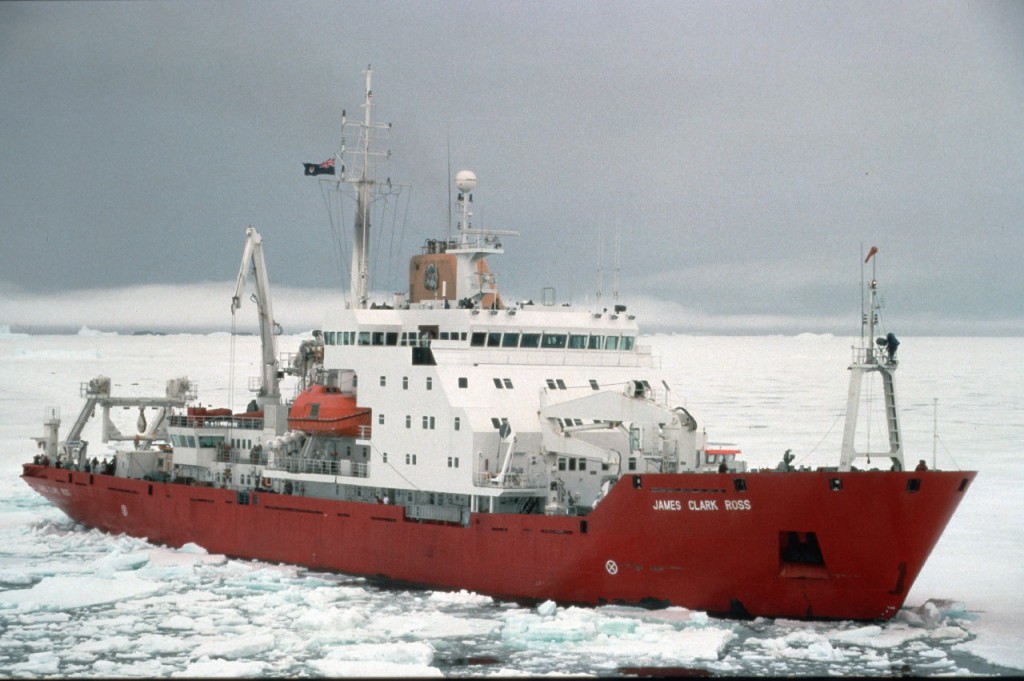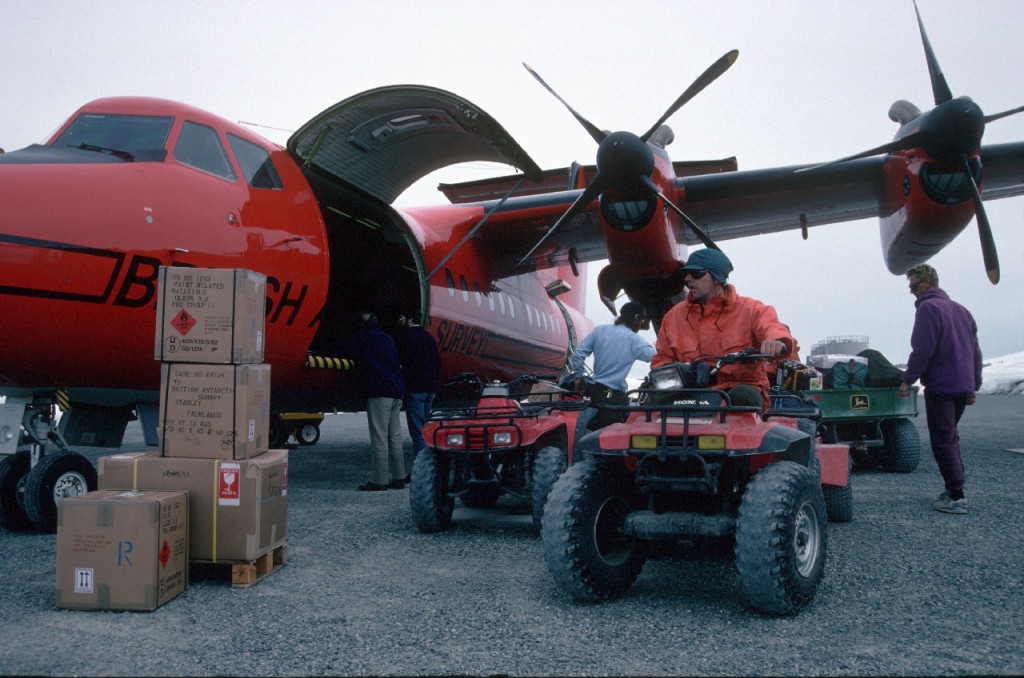Location: Rothera Research Station, Adelaide Island
As you make your way towards Rothera by plane, you can begin to recognise the mountains and islands you have seen in so many photos taken by others on the station. It is only when you are very close the station that you can make out Rothera Point and then the buildings. The most obvious feature of Rothera when viewed from the air is the 900 m long runway and even at this size, the entire station seems tiny in comparison to the surrounding scenery. After taxiing to a stop outside the hangar, you are instructed to take only your hand luggage and disembark to walk to the main building.
If you have arrived on RRS Sir David Attenborough, the ship will moor alongside the new wharf at Rothera. The discharging of cargo usually begins immediately and can take two or more days. Lots of containers arrive for unloading and the technical crew are kept very busy driving the big machines needed to deliver supplies around the station. Lines of volunteers are needed to begin unloading these containers into the various buildings.

It seems something of a shock to suddenly have come from sunny and relatively warm Falkland Islands into the cloudy, isolated and cold wilderness of Antarctica. You are escorted in a group over to the main building, led by the Base Commander (BC) who had arrived on the first Dash-7 flight. You pause only briefly as the BC points out various buildings. On arrival at the main building, you shed your outer layers, leaving your outdoor coats and boots in the aptly named ‘boot room’. The BC explains that the first night is now your own, but that you will begin the training bright and early in the morning.
You collect your kit bags and head off to find your room. The current “pitrooms” sleep up to four people in a rather confined space. The metal-framed bunkbeds and wardrobes also mean you cannot easily get out of bed and dress without disturbing the other occupants! The toilet and washing facilities are shared.

The next day starts in earnest with lectures and training activities to be completed before you are allowed into the field. This is the start of an intensive period of familiarisation of the station, its rules and opportunities.
Training begins the next morning with a tour and an introduction to the various domestic base jobs you all have to take turns at. These include Sunday cook, gash (waste management and cleaning days) and communal scrub-out where everyone cleans part of the base. This is followed by a series of training sessions covering such topics as the base vehicles, radios, meteorological observations and the base medical facilities.
One of the most enjoyable parts is driving the personal, motorised oversnow vehicles. These are ski-doos made by Bombardier in Finland. You may be surprised how unstable they feel when driving over the bumps on the ramp up to the old aircraft skiway opposite the station. The precarious riding position kneeling on the seat and their speed (over 30 mph downhill possible) sometimes make you feel as though you are about to be thrown off the ski-doo even over small undulations! However, there are two ‘doos for general use, so with plenty of practice your confidence will grow.
Following familiarisation of the station, there is a period of field training lasting three days.
View a panorama of Rothera Station

Options:
- Fly to Halley Research Station
- Visit refuelling facility at Fossil Bluff
- Visit forward logistics facility at Sky-Blu
Next stop: Twin Otter Aircraft
